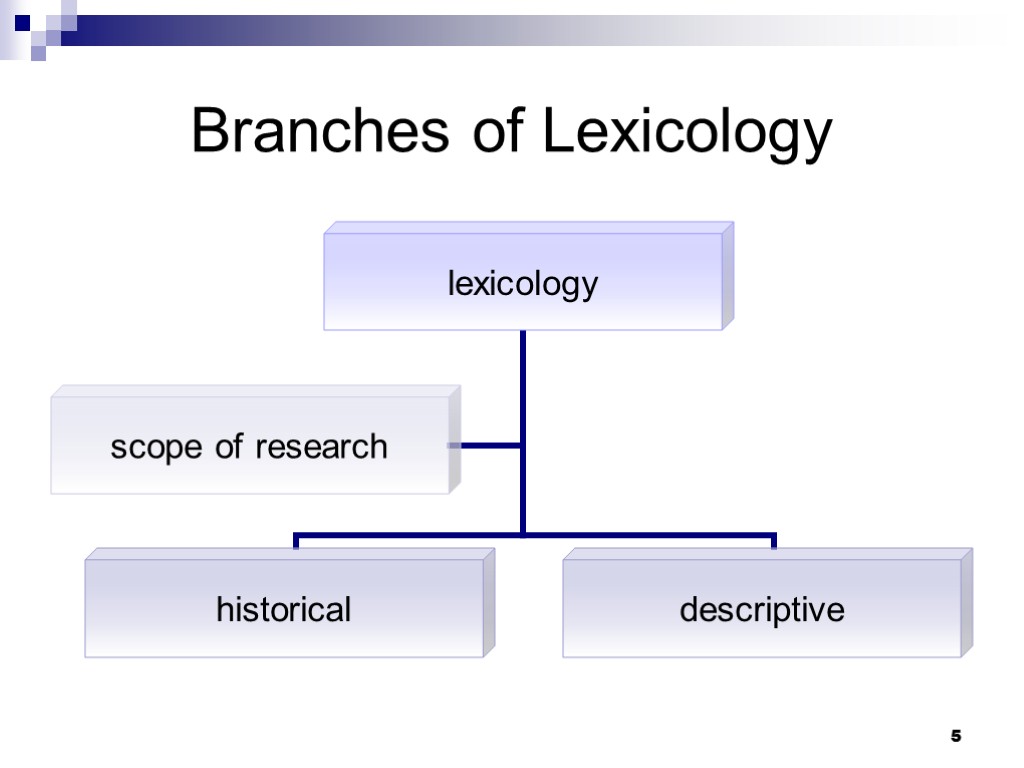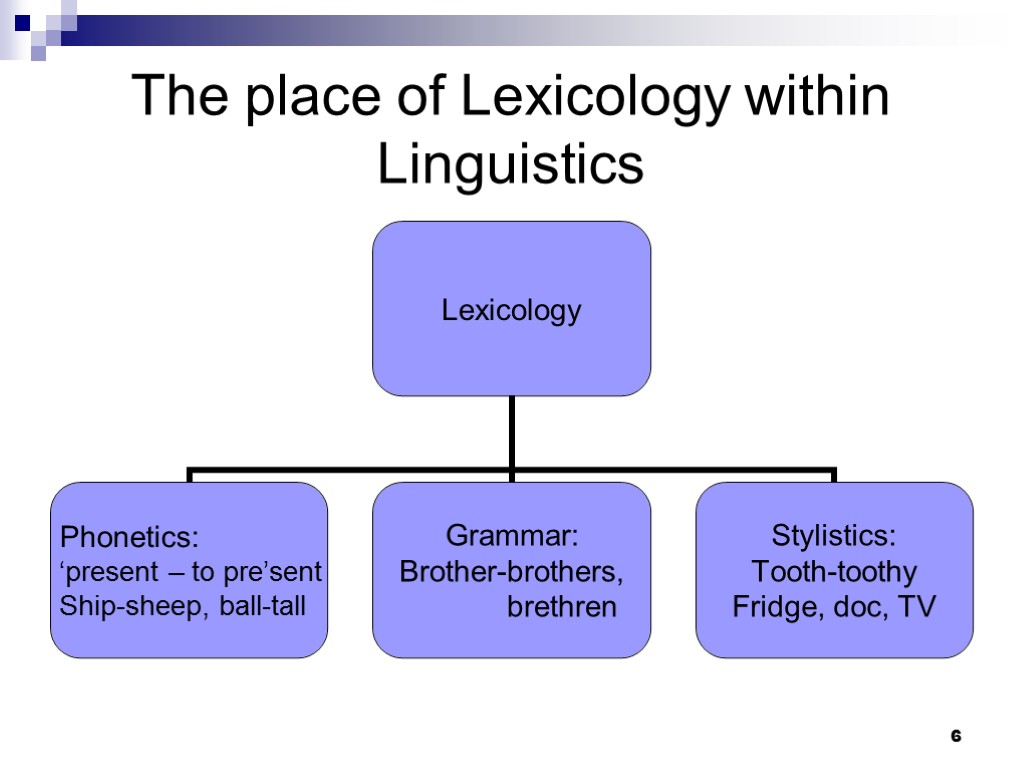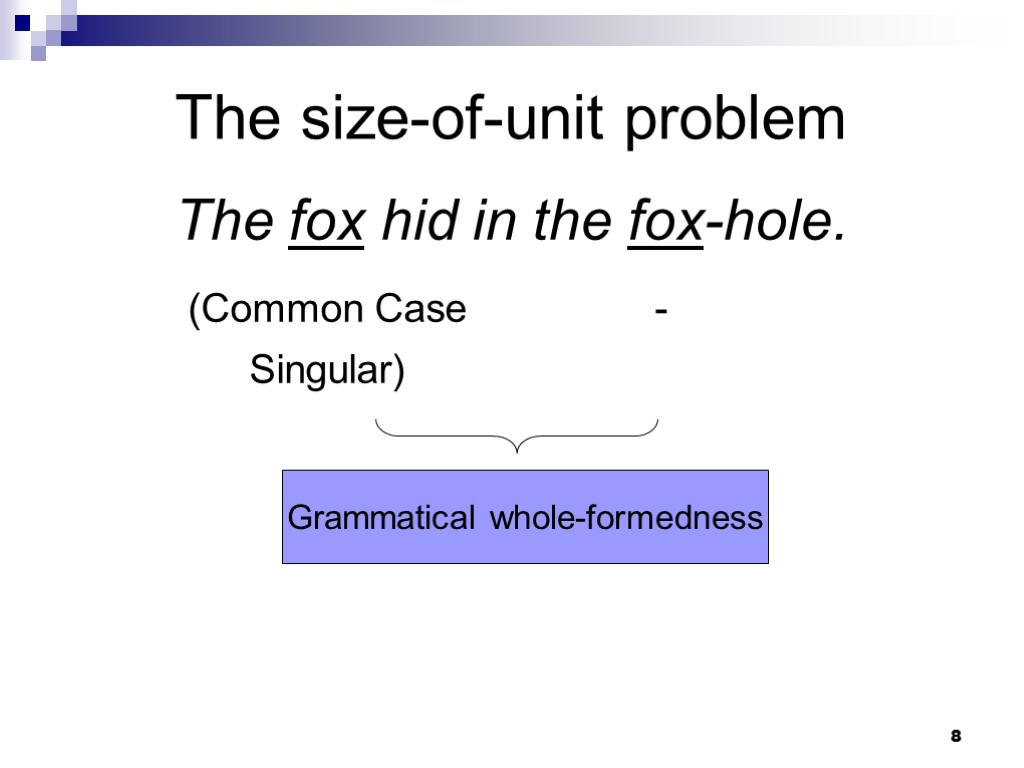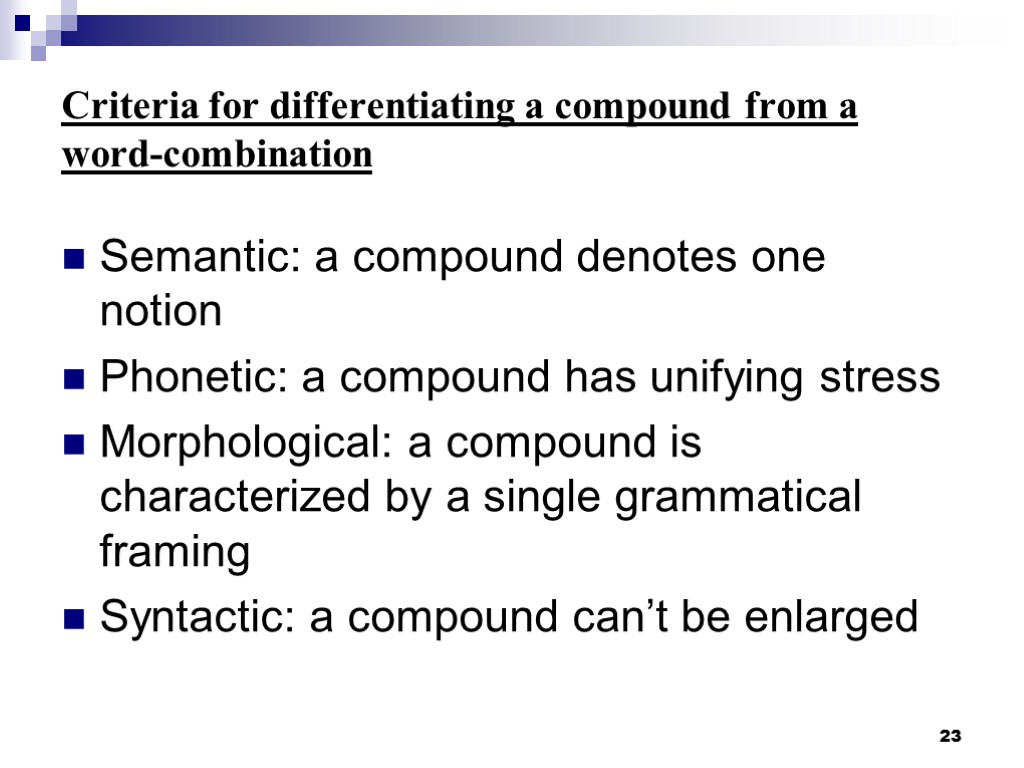Morphological Structure of the English Word. Word-building. Julia


Morphological Structure of the English Word. Word-building. Julia E. Mishina

2 Points to be discussed: Lexicology as a branch of linguistics. Morphological structure of the English word. Word formation: Affixation. Conversion. Compound words. Shortening and minor types of word-building

3 Vocabulary – the system formed by the sum total of all the words that the language possesses. Language – a semiological system as the main and basic means of human communication. Word – the basic unit of the language, the unity of expression (sound form) and the content (meaning).

4 Branches of Lexicology

5 Branches of Lexicology

6 The place of Lexicology within Linguistics

7 Practical value of Lexicology provides the correct use of synonyms gives basic knowledge of word-building patterns helps to avoid semantic calque from one’s native language teaches to identify set-expressions, synonyms, phraseological units etc. and to translate them properly teaches to differentiate between polysemantic words and homonyms

8 The size-of-unit problem The fox hid in the fox-hole. (Common Case - Singular) Grammatical whole-formedness

9 The identity-of-unit problem Variants of the word: phonetic automatic: a book – an apple accentual: ‘territory – terri’tory emic: direct [di’rekt, dai’rekt] morphological: grammatical: learn-learned, learnt lexical: stylistic – stylistical semantic: sweet tea – a sweet voice

10 Classification of morphemes

11 The two aspects of lexical morphology

12 Structural types of words Simple (root) Derived stems (derivatives) Compound stems Compound derivatives

13 ‘One-way’ and ‘two-way’ segmentability of the word beautiful beauty careful beauteous wonderful to beautify hopeful beautician, etc. plentiful, etc.

14 Lexical-morphological categories The lexical-morphological categories are those categories of the most general character which are realized in the semantic opposition according to a certain distinctive feature of two or more words on condition that the same opposition finds systematic expression.

15 Lexical-morphological categories lexical morphological category of quality: black – blackness, dark – darkness, quiet – quietness, happy – happiness lexical morphological category of action-agent: to do – doer, to read – reader, to manage – manager, to go – goer, to combine –combiner, to intrude – intruder lexical morphological category of caritivity : friend – friendless, faith – faithless, rest – restless, tree – treeless, expression – expressionless

16 (to) drive + er = driver (n) Structural pattern: Verb stem + ”er”suffix(noun forming)= noun Semantic pattern: Action + “agent of action” = profession

17 Word-building patterns

18 Affixation – forming a word by combining a stem and derivational affixes

19 Conversion- a special type of derivation in which the word-forming means is the paradigm of the word Semantic changes which accompany conversion: N – a tool, V – an action performed by it; N - an animal, V – typical behavior; N – a profession, V – typical activity; N – a container, V – the process of occupying this container; N – period of time, V – presence somewhere within this period; N – a meal, V – the process of taking it.

Factors facilitating conversion in English analytical structure of Modern English (in comparison with synthetical structure of Russian); simplicity of paradigms of English parts of speech; a great number of monosyllables (root words), which easily enter semantic relations within conversion pairs. 20

21 Composition – forming a word by combining two or more stems Structural classification of compounds Neutral: bedroom, snowfall Morphological: speedometer, Afro-Asian, statesman Syntactical (lexicalized phrases): son-in-law, pepper-and-salt, with a devil-may-care expression on his face, his next what’s-her-name, A.Christie’s famous whodunit Derivational: blue-eyed, writing table Contracted: math-mistress, V-day, H-bag

22 Semantic classification of compounds

23 Criteria for differentiating a compound from a word-combination Semantic: a compound denotes one notion Phonetic: a compound has unifying stress Morphological: a compound is characterized by a single grammatical framing Syntactic: a compound can’t be enlarged

24 Shortening - the process of substituting a part for a whole Clipping – cutting off of a part of a word to one or two syllables Abbreviation – forming a word out of the initial elements of a word-combination Blending – combining parts (but not morphemes) of two words to form one word

25 Minor types of word-building Sound and stress interchange Sound imitation Reduplication Back-formation
morphlogy_and_word-building.ppt
- Количество слайдов: 25

